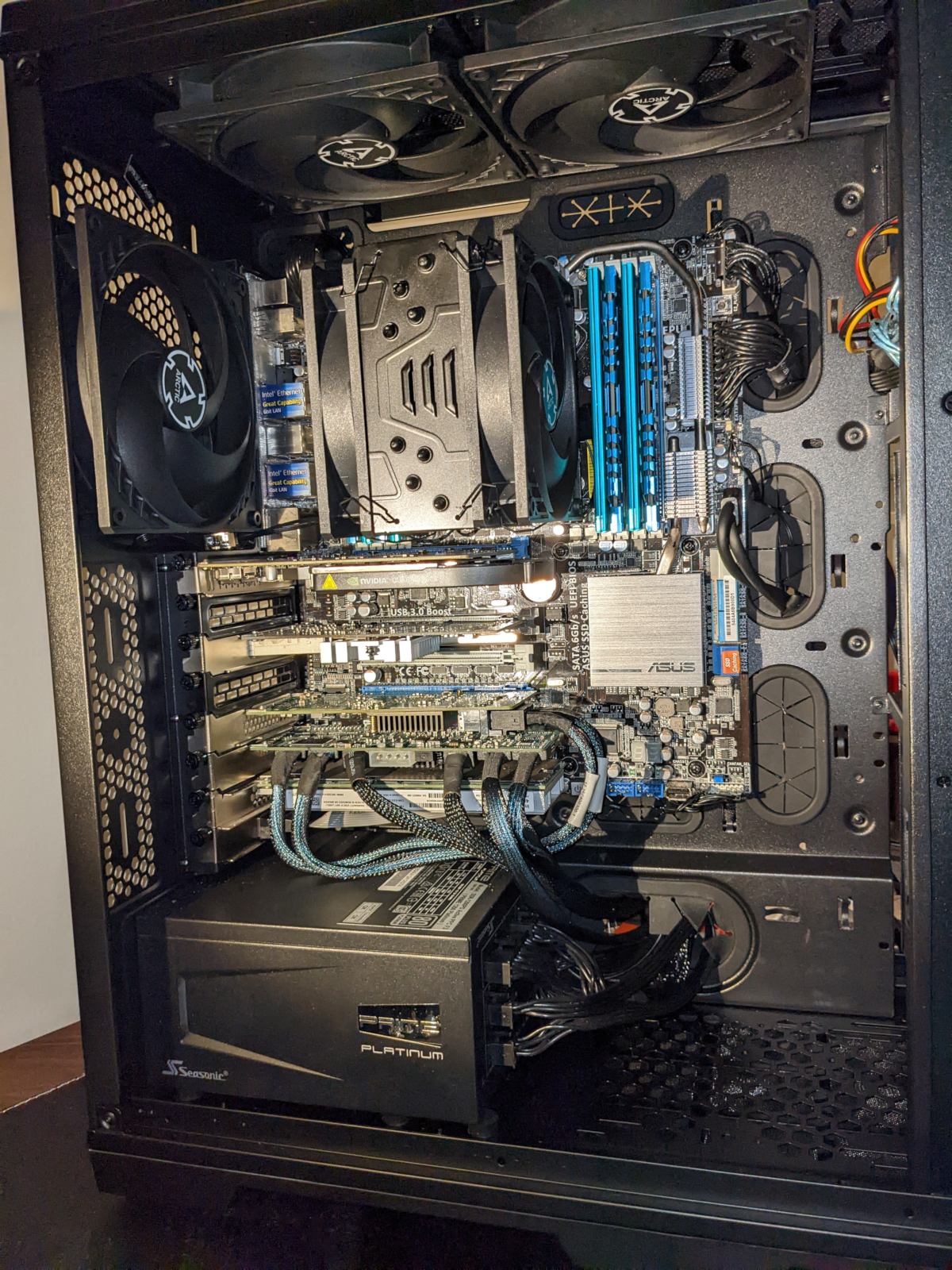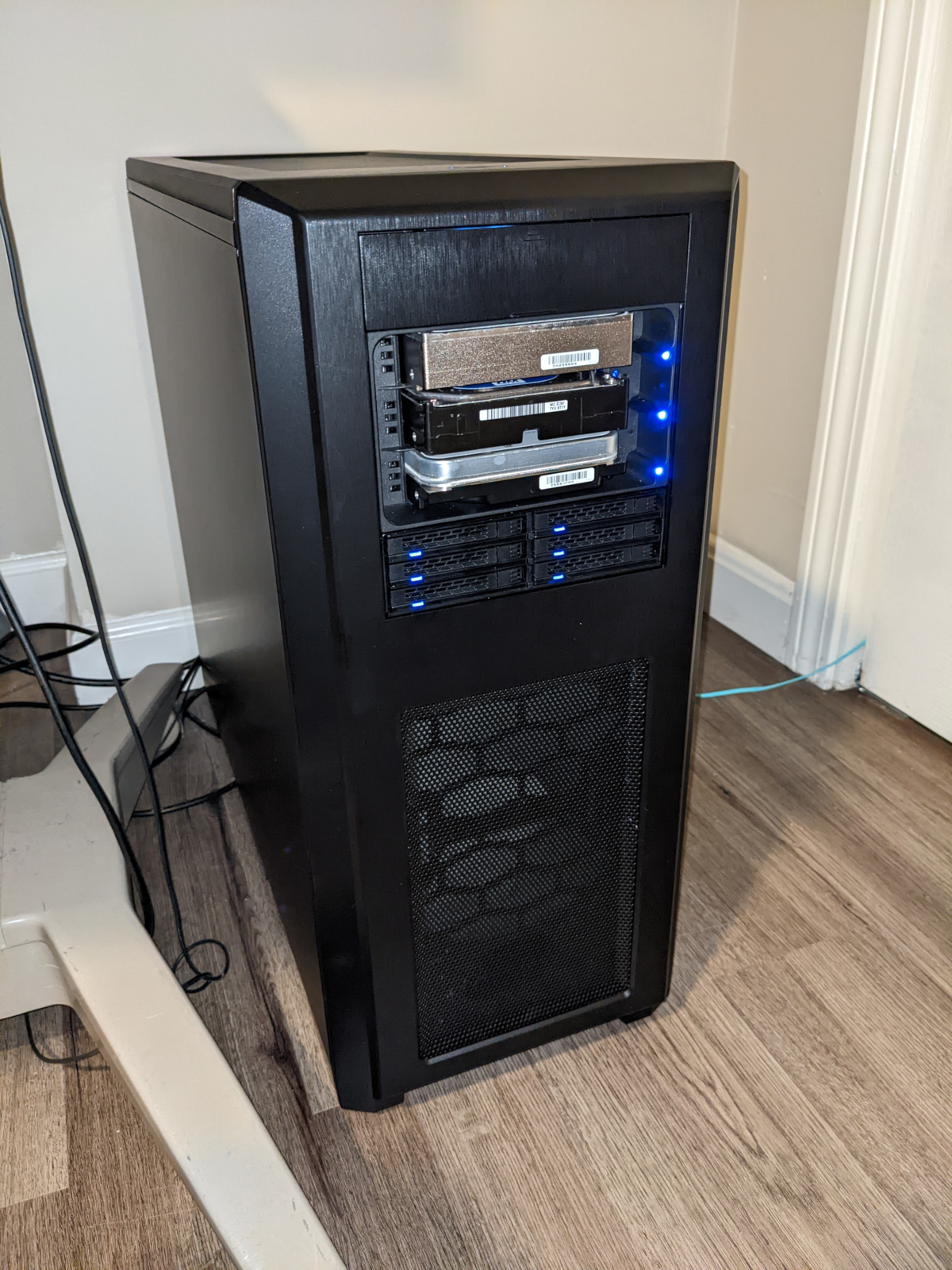A few years later but I think I did alright. Some BF deals at the time and thought it was a great point to try something new.
View attachment 2332
I was only ever able to take that CPU to 4.3 GHz but I did the same with that rig in terms of updating mem, drives, and GPUs through the years. Always felt a bit empty by the time I got to a 2080 Ti and walked away from SLI, and got rid of my 2 or 3 RAIDs and swapped over to a few SSDs w/ just a couple of platters for media storage.
Edit: BTW those platters and a 2 TB SATA III SSD are now in the 3700X rig.
hehe. Here's mine:

I'm so glad Newegg reminded me that it is past the return period.

I think when I got this I used it with my first SSD, an OCZ Agility 120G as an install and game drive (only very few games at the time, but they were smaller then) and had a 2TB WD Green as a file storage drive. I can't really remember though. I started out with 6GB of RAM< but eventually went up to 12.
This board outlived so many GPU's. When I bought it in late 2011 I already had dual triple slot Asus DirectCUII Radeon HD 6970's, but I had nothing but problems with Crossfire, so on launch in January 2012 I bought a Radeon HD 7970, hoping a single GPU would be enough to power 2560x1600. It wasn't, so I tried to ghetto mount a corsair AIO to it to better overclock it, but I slipped with my screwdriver during cooler disassembly and wrecked it. Went for like a month without a GPU, and then bought a Geforce GTX 680 on launch. It still wasn't quite there for 2560x1600 use, but I made it work until the first Titan launched in February 2013, when I hopped on that. I felt buyers remorse for spending so much on a GPU, but then again it actually was sufficient for my 2560x1600 screen and lasted me longer than any GPU had to date. I didn't upgrade again until I made the silly mistake of being a high res early adopter
again summer of 2015, when I went 4k, and I suddenly needed HDMI 2.0 and more power so the Titan didn't cut it anymore. I wound up going with dual Geforce GTX 980ti's thinking that surely SLI was a better experience than Crossfire had been. I was wrong. SLI sucked too, which is when I bought my Pascal Titan X on launch summer of 2016.
When I retired the x79 system as my main machine in 2019 I had truly taken the most out of it. I had a custom loop in it, with my Pascal Titan X, 64GB of RAM the same 3930k still soldiering on at 4.8Ghz. The board didn't support booting from NVMe drives, but it turns out that intel's SSD750 PCIe drives actually were one of the very few NVMe drives with an old fashioned boot rom on it, so I booted from a 400GB SSD750. I had a second NVMe drive, a 1TB m.2 970 Evo in a PCIe slot riser which I used for games and other storage.
Even with a GPU (16x) and two PCIe SSD's (4x Each) I still had space for my Creative Titanium HD sound card.
I truly got just about every ounce worth out of that x79 build. It was a great system while it lasted.
As previously mentioned it is still in use as my testbench, in a new Phanteks Enthoo Pro case I recently built together, with an LSI SAS-9300-16i controller and a 10gig NIC for testing drives and dumping drive images to the NAS.
(Seen above with an LSI 9300-8i board and an Intel SAS Expander before I bought the 9300-16i)
I still chuckle a little bit at the buyers remorse I had in 2011 when I bought it as I couldn't believe I had spent such a crazy amount of money on a motherboard/cpu, but 12 years later it is still useful to me, so I think in the end I got my moneys worth

8 years of mainline use as my desktop, and who knows how many more years as a testbench?
When I finally upgrade my server, I will probably move the supermicro board that is currently in it to the testbench role, and then the old x79 board will finally get some rest






